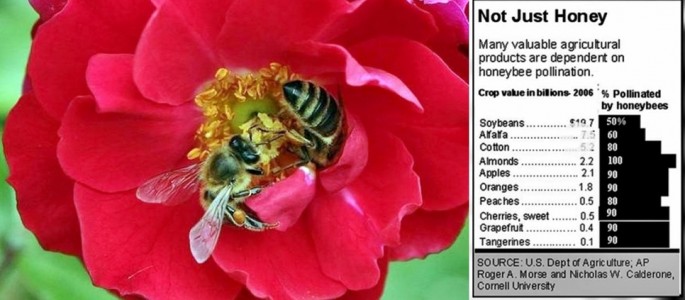U.S. beekeepers lost 42.1 percent of their honeybee colonies between April 2014 and April 2015, the second-highest annual loss ever recorded.
The Bee Informed Partnership also reported annual beehive losses varied across the US, with the highest in Oklahoma at 63.4 percent and the lowest in Hawaii at 14 percent.
During the 2014-15 winter season, honeybee die-offs stood at 18.7 percent, which is lower than the nine-year average total loss of 28.7 percent, said the Bee Informed Partnership. The partnership, however, said bees don't just die during winter but also die-off in the summer.
From April to October 2014, the summer colony mortality exceeded winter fatalities. Beekeepers reported a loss of 27.4 percent of their colonies compared with summer losses of 19.8 percent in 2013.
"Importantly, commercial beekeepers appear to consistently lose greater numbers of colonies over the summer months than over the winter months, whereas the opposite seems true for smaller-scale beekeepers," the Bee Informed Partnership said in a statement.
The partnership said these relentless losses continue a trend of die-offs among bee colonies that might seriously affect the nation's food supply. Bees pollinate 80 percent of all the flowering crops in the U.S. and these crops account for a third of the food crops Americans eat.
Without bees to pollinate crops, Americans might lose most of their staple foods such as apples tomatoes and berries.
Beekeepers say it's normal to lose some colonies. A loss of about 18.9 percent of colonies during a winter season is acceptable. What's not acceptable is the rising and relentless losses occurring every year.
Entomologists can't agree on any single cause of this deadly phenomenon but are leaning towards the view it's being caused by a confluence of factors. Perhaps the most deadly of these factors are pesticides, especially neonicotinoids.
Other reasons include winter cold, viruses, fungi and Colony Collapse Disorder or CCD, which is one of the biggest problems.
Colonies destroyed by CCD are entirely deserted. The worker bees disappear but their bodies are nowhere to be found. It's likely the workers died elsewhere and leave the queen all alone in the hive.
Entomologists think CCD is the combination of an unfortunate combination of pesticides, parasites, pathogens and nutritional problems caused by less diversity and availability of sources of pollen and nectar. Any of those causes could also contribute to more ordinary kinds of colony loss, according to Discovery.
The Bee Informed Partnership is a collaboration of efforts across the U.S. that includes some of the leading research labs and universities in agriculture and science aimed at better understanding honeybee declines in the country. Supported by the U.S. Department of Agriculture and the National Institute of Food and Agriculture, it's working with beekeepers to better understand how it can keep healthier bees.



























